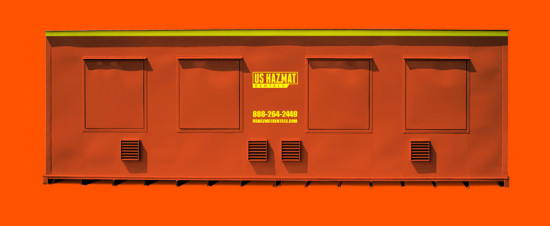The Hazard Rating System
The National Fire Protection Association (NFPA) is the organization that created this helpful and potentially life-saving system of chemical classification. The hazard rating system they designed is called the NFPA 704 Diamond, and it classifies chemicals numerically from 0 to 4 based off of four attributes. The higher the number, the more dangerous the chemical in that category. The four categories that are used for analyzation are health, reactivity, flammability, and special hazards. Understanding the NFPA’s hazard rating system is important in order to make safe decisions for yourself and your commercial enterprise. This article will focus on the health component of the NFPA 704 Diamond.
Health Component
The health component of this hazard rating system is depicted in the blue section of the diamond. Its ratings mean:
- A rating of zero means that if the material is under fire, it would not be more hazardous than a regular combustible material.
- A rating of one means that if exposed to this material, one could see irritation but only minor residual injury even without treatment. This rating includes materials that when under fire produces irritating products, and materials that could cause irritation but not destruction of tissue if on skin.
- A rating of two means that intense or prolonged exposure to this material could lead to incapacitation and residual injuries without quick medical treatment. This includes materials which require the use of protective respiratory equipment with its own air supply, materials that give off toxic and/or highly irritating combustion products, and materials that no matter if under normal or fire conditions give off toxic vapors lacking warning properties.
- A rating of three means that the material under short-term exposure could have serious temporary or long-lasting injuries regardless of quick medical treatment. This rating includes materials that require protection from all bodily contact, materials that give off highly toxic combustion products, and materials that are severely damaging to living tissue or toxic through skin absorption.
- A rating of four means that the material could cause death or serious residual injury from very limited exposure even if quick medical treatment is given. This includes materials that require specialized protective equipment, materials that can penetrate ordinary rubber gear, and materials that under normal or fire conditions give off gases that are extremely toxic or corrosive whether through inhalation, absorption, or contact.
Understanding the implications of this hazard rating system is extremely important to the health and safety of those entrusted to you. It is your job to know what these ratings mean for each chemical, and how it affects the protection of your employees, nearby citizens, and even your family. We can help provide you with the knowledge and chemical or explosive storage units that will protect you, you family, your livelihood, and the environment. For more information on the rating system, visit this page from Northeastern University. Call us today at (888) 264-2449, and like us on Facebook for more information and stories! Be safe!






